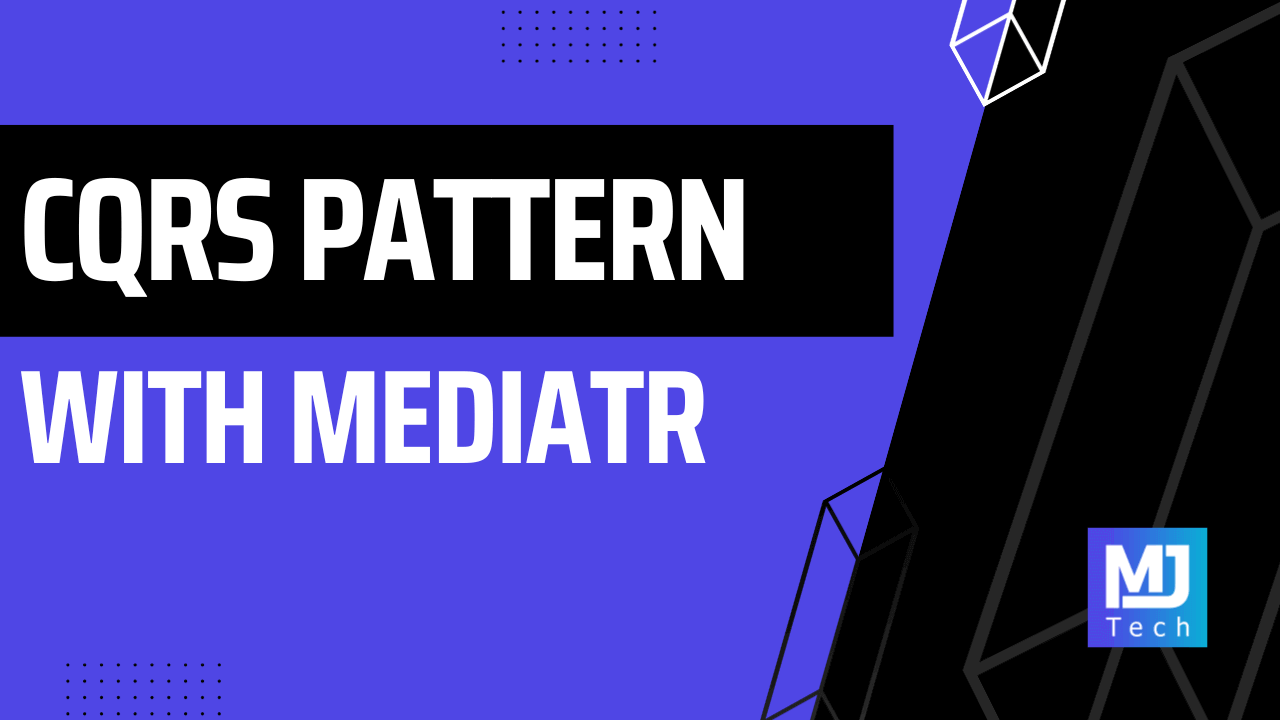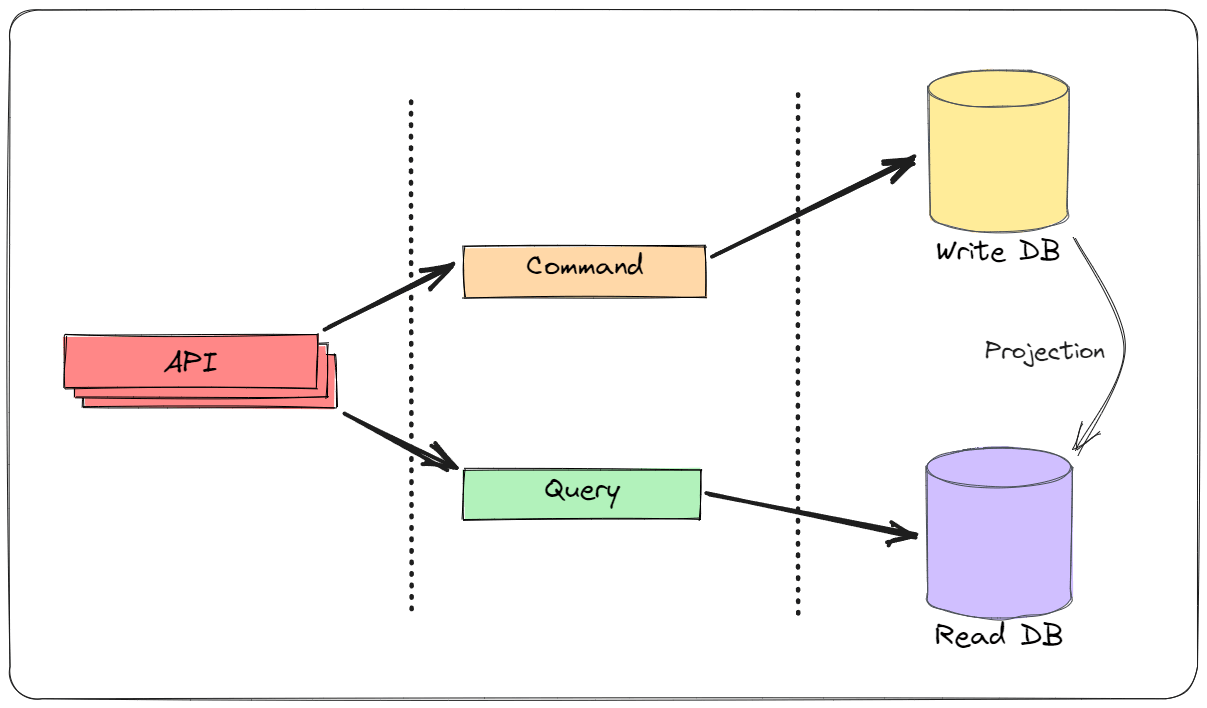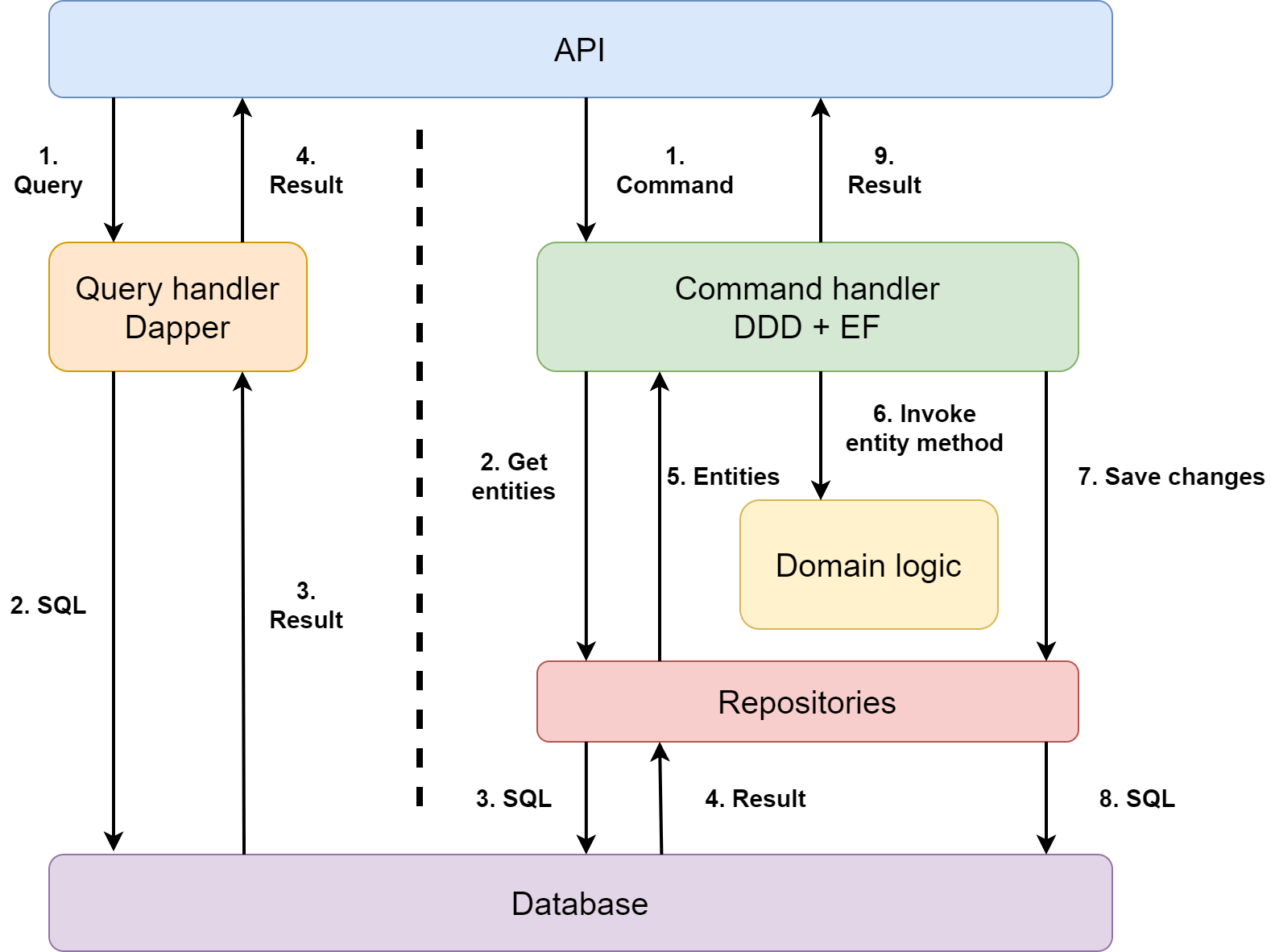CQRS Pattern With MediatR
 Milan Jovanović
Milan Jovanović
Today I want to show you how to use the CQRS pattern to build fast and scalable applications.
The CQRS pattern separates the writes and reads in the application.
This separation can be logical or physical and has many benefits:
Complexity management
Improved performance
Scalability
Flexibility
Security
I'm also going to show you how to implement CQRS in your application using MediatR.
But first, we have to understand what CQRS is.
What Exactly is CQRS?
CQRS stands for Command Query Responsibility Segregation. The CQRS pattern uses separate models for reading and updating data. The benefits of using CQRS are complexity management, improved performance, scalability, and security.
The standard approach for working with a database is using the same model to query and update data. This is simple and works great for most CRUD operations. However, in more complex applications, it becomes difficult to maintain. On the write side, you could have complex business logic and validation in the model. On the read side, you may need to perform many different queries.
Also, consider how we create the data model. Applying SQL data modeling best practices will give you a normalized database. This is generally fine, but it's optimized for writing.
Having separate models for commands and queries allows you to scale them independently. The separation could be logical while using the same database. You could split the subsystems for commands and queries into separate services. And you can even have multiple databases optimized for writing or reading data.
How Is It Different From CQS?
CQS stands for Command Query Separation. It's a term coined by Bertrand Meyer in his book Object-Oriented Software Construction.
The basic premise of CQS is splitting an object's methods into Commands and Queries.
Commands: Change the state of a system but don't return a value
Queries: Return a value and don't change the state of the system (no side effects)
This doesn't mean a command can never return a value. A typical example is popping a value from a stack. It returns a value and changes the state of the system. But the intent is what matters here.
CQS is a principle. You can follow this principle if it makes sense, but be pragmatic.
CQRS is the evolution of CQS. CQRS works on the architectural level. At the same time, CQS works on the method (or class) level.
Many Flavors of CQRS
Here's a high-level overview of a CQRS system using multiple databases. Commands update the write database. Then, you need to synchronize the updates with the read database. This introduces eventual consistency to CQRS systems.
Eventual consistency significantly increases the complexity of your application. You must consider what happens if the synchronization process fails, and have a fault tolerance strategy.

There are many flavors of this approach:
SQL database on the write side and NoSQL database (for example, RavenDB) on the read side
Event sourcing on the write side and NoSQL database on the read side
Using Redis or some other distributed cache on the read side
Separating the models for updating and reading data allows you to choose the best database for your requirements.
Logical CQRS Architecture
How do you apply the CQRS pattern to your system? I prefer using MediatR.
MediatR implements the mediator pattern to solve a simple problem - decoupling the in-process sending of messages from handling messages.
You can extend MediatR's IRequest interface with a custom ICommand and IQuery abstraction. This allows you to define commands and queries in your system explicitly.
On the write side, I typically use EF Core and a rich domain model to encapsulate business logic. The command flow uses EF to load an entity into memory, execute the domain logic, and save the changes to the database.
On the read side, I want as little indirection as possible. Using Dapper with raw SQL queries is an excellent choice. You can also create views in the database and query them. Alternatively, you could use EF Core to execute queries with projections.

Implementing CQRS With MediatR
Implementing CQRS with MediatR has two components:
Defining your command or query class
Implementing the respective command or query handler
I made an in-depth video explaining this process, and you can watch it here.
You use the ISender interface to Send the command or query. MediatR takes care of routing the command or query to the respective handler.
The request will pass through the request pipeline. It's a wrapper around each request, and you can use it to solve cross-cutting concerns with IPipelineBehavior. For example, you can implement validation for commands with FluentValidation.
[ApiController]
[Route("api/bookings")]
public class BookingsController : ControllerBase
{
private readonly ISender _sender;
public BookingsController(ISender sender)
{
_sender = sender;
}
[HttpPut("{id}/confirm")]
public async Task<IActionResult> ConfirmBooking(
Guid id,
CancellationToken cancellationToken)
{
var command = new ConfirmBookingCommand(id);
var result = await _sender.Send(command, cancellationToken);
if (result.IsFailure)
{
return BadRequest(result.Error);
}
return NoContent();
}
}
Here's an example of a command handler with repositories and a rich domain model:
internal sealed class ConfirmBookingCommandHandler
: ICommandHandler<ConfirmBookingCommand>
{
private readonly IDateTimeProvider _dateTimeProvider;
private readonly IBookingRepository _bookingRepository;
private readonly IUnitOfWork _unitOfWork;
public ConfirmBookingCommandHandler(
IDateTimeProvider dateTimeProvider,
IBookingRepository bookingRepository,
IUnitOfWork unitOfWork)
{
_dateTimeProvider = dateTimeProvider;
_bookingRepository = bookingRepository;
_unitOfWork = unitOfWork;
}
public async Task<Result> Handle(
ConfirmBookingCommand request,
CancellationToken cancellationToken)
{
var booking = await _bookingRepository.GetByIdAsync(
request.BookingId,
cancellationToken);
if (booking is null)
{
return Result.Failure(BookingErrors.NotFound);
}
var result = booking.Confirm(_dateTimeProvider.UtcNow);
if (result.IsFailure)
{
return result;
}
await _unitOfWork.SaveChangesAsync(cancellationToken);
return Result.Success();
}
}
Here's an example of a query handler that uses Dapper and raw SQL:
internal sealed class SearchApartmentsQueryHandler
: IQueryHandler<SearchApartmentsQuery, IReadOnlyList<ApartmentResponse>>
{
private static readonly int[] ActiveBookingStatuses =
{
(int)BookingStatus.Reserved,
(int)BookingStatus.Confirmed,
(int)BookingStatus.Completed
};
private readonly ISqlConnectionFactory _sqlConnectionFactory;
public SearchApartmentsQueryHandler(
ISqlConnectionFactory sqlConnectionFactory)
{
_sqlConnectionFactory = sqlConnectionFactory;
}
public async Task<Result<IReadOnlyList<ApartmentResponse>>> Handle(
SearchApartmentsQuery request,
CancellationToken cancellationToken)
{
if (request.StartDate > request.EndDate)
{
return new List<ApartmentResponse>();
}
using var connection = _sqlConnectionFactory.CreateConnection();
const string sql = """
SELECT
a.id AS Id,
a.name AS Name,
a.description AS Description,
a.price_amount AS Price,
a.price_currency AS Currency,
a.address_country AS Country,
a.address_state AS State,
a.address_zip_code AS ZipCode,
a.address_city AS City,
a.address_street AS Street
FROM apartments AS a
WHERE NOT EXISTS
(
SELECT 1
FROM bookings AS b
WHERE
b.apartment_id = a.id AND
b.duration_start <= @EndDate AND
b.duration_end >= @StartDate AND
b.status = ANY(@ActiveBookingStatuses)
)
""";
var apartments = await connection
.QueryAsync<ApartmentResponse, AddressResponse, ApartmentResponse>(
sql,
(apartment, address) =>
{
apartment.Address = address;
return apartment;
},
new
{
request.StartDate,
request.EndDate,
ActiveBookingStatuses
},
splitOn: "Country");
return apartments.ToList();
}
}
Closing Thoughts
Separating commands and queries can improve performance and scalability in the long run. You can optimize commands and queries differently based on your requirements.
Commands encapsulate complex business logic and validation. Using EF Core and a rich domain model is an excellent solution.
Queries are all about performance, so you want to use what's fastest. This could be raw SQL queries with Dapper, EF Core projections, or Redis.
If you want the system I use to build scalable applications with CQRS and MediatR, check out Pragmatic Clean Architecture.
Stay awesome!
P.S. Whenever you’re ready, there are 2 ways I can help you:
Pragmatic Clean Architecture: This comprehensive course will teach you the system I use to ship production-ready applications using Clean Architecture. Learn how to apply the best practices of modern software architecture. Join 1,050+ students here.
Patreon Community: Think like a senior software engineer with access to the source code I use in my YouTube videos and exclusive discounts for my courses. Join 880+ engineers here.
Subscribe to my newsletter
Read articles from Milan Jovanović directly inside your inbox. Subscribe to the newsletter, and don't miss out.
Written by

Milan Jovanović
Milan Jovanović
I'm a seasoned software architect and Microsoft MVP for Developer Technologies. I talk about all things .NET and post new YouTube videos every week.